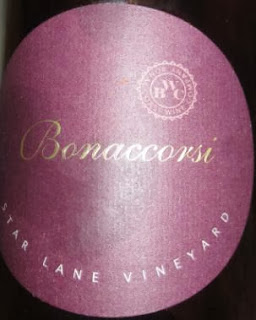Black rot is caused by the fungus
Guignardia bidwellii and is a very serious grape disease in Connecticut. We had a run in with black rot during the 2013 growing season in our newly planted vineyard.
Guignardia bidwellii primarily overwinters in mummified berries on the soil surface or in old clusters still attached to the vine. Ascospores (the sexual overwintering spores), require free water and temperatures of 50 to 90°F (80°F is optimal, germination time is 6 hrs) to germinate. All new growth is susceptible to attack during the growing season including young leaf laminae, petioles, shoots, tendrils and peduncles. A single ascospore infection can result in the development of millions of secondary conidia in the vineyard.
A Cornell Cooperative Extension Disease Identification Sheet No. 102GFSG-D4 published in 2003 by Wayne Wilcox is very helpful. I found the lifecyle of the fungus in that online publication.:
1
Good sanitation practices in the vineyard can reduce the black rot inoculum. These practices include:
- Remove all mummies during the dormant pruning process
- Cultivate beneath the vines near budbreak to bury any mummies
- Improve control by canopy management practices that promote air circulation for drying of the leaves and fruit
For much more information, the first reference below, is the link to the publication written by Wayne Wilcox. It contains pictures of grape leaves, fruit and stems infected by black rot and is an excellent reference
References:
1. Wayne Wilcox,
Black Rot, Cornell Cooperative Extension.
2. Roger C Pearson and Austin C. Goheen,
Compendium of Grape Diseases, APS Press, Published by the American Phytopathological Society, 3340 Pilot Knob Rd., St. Paul, MN 55121.
3.
Virginia Tech Online Guide To GRAPEVINE DISEASES.
4. Mizuho Nita and Mike Ellis,
Integrated Management of Grape Diseases, Ohio State University, Department of Plant Pathology.



















